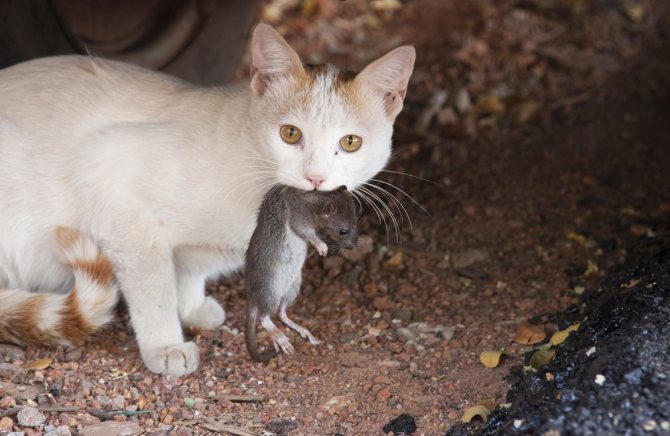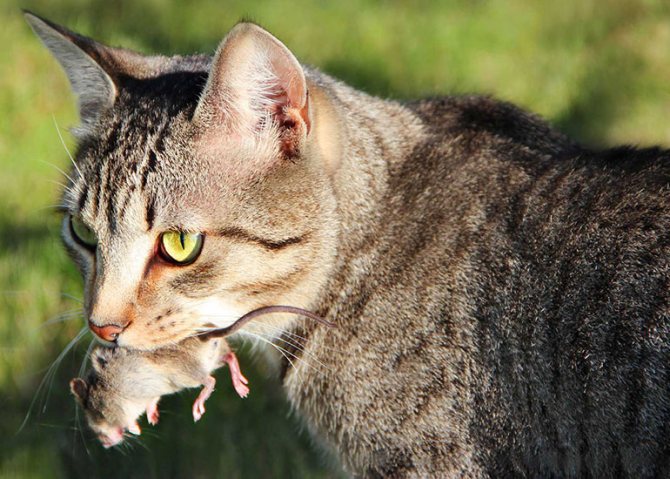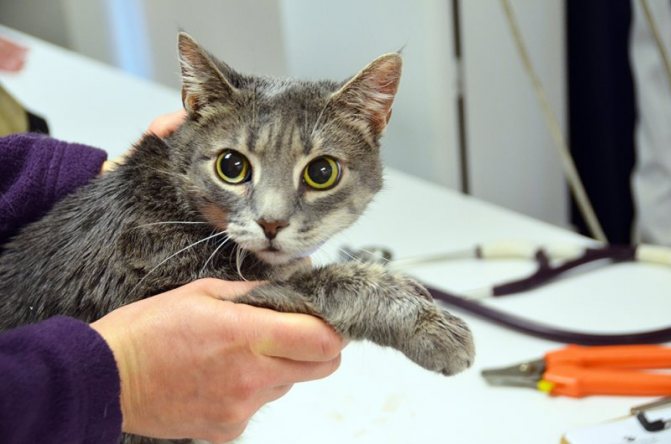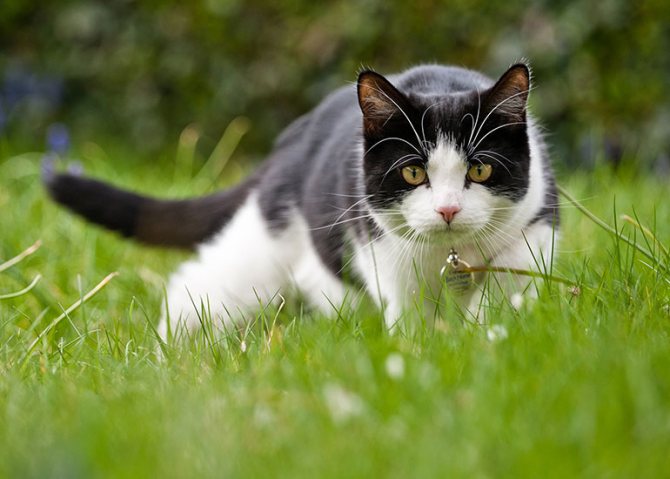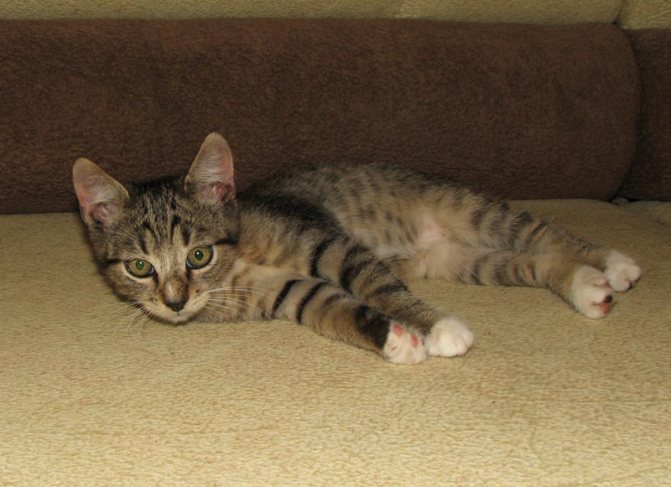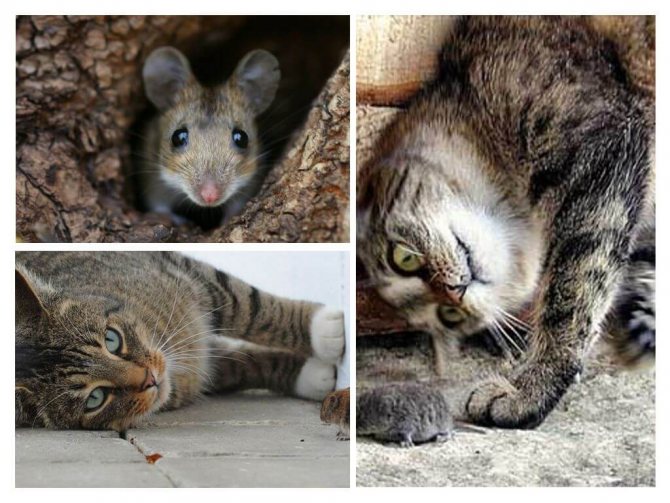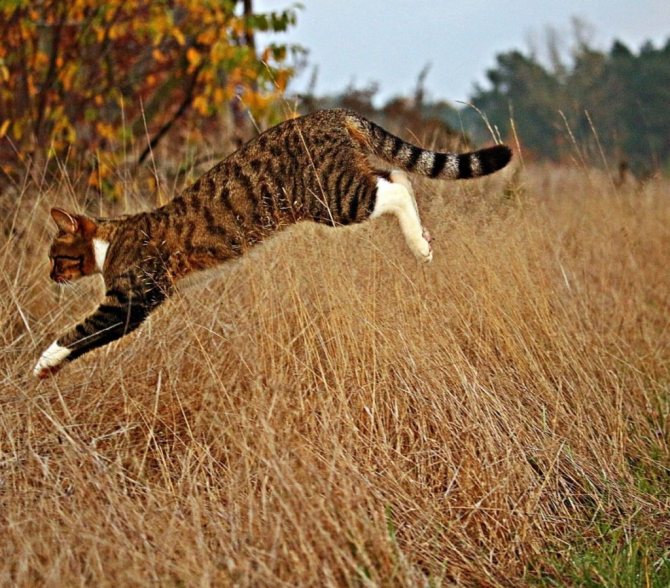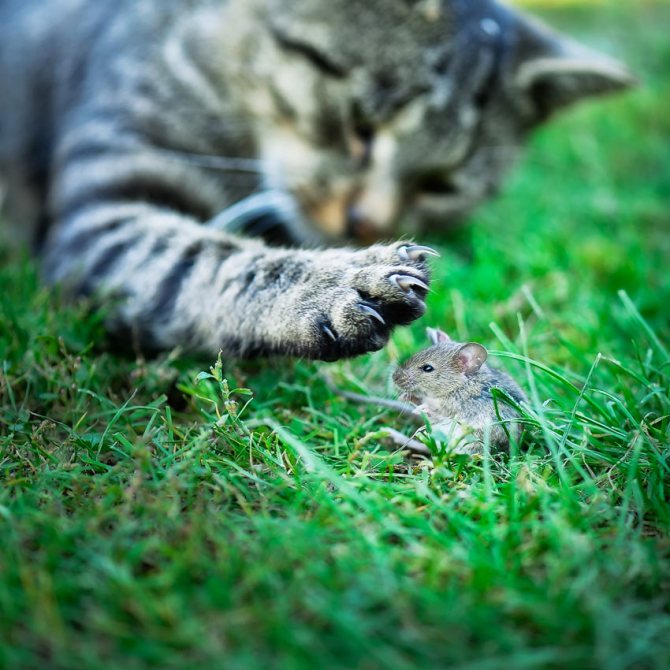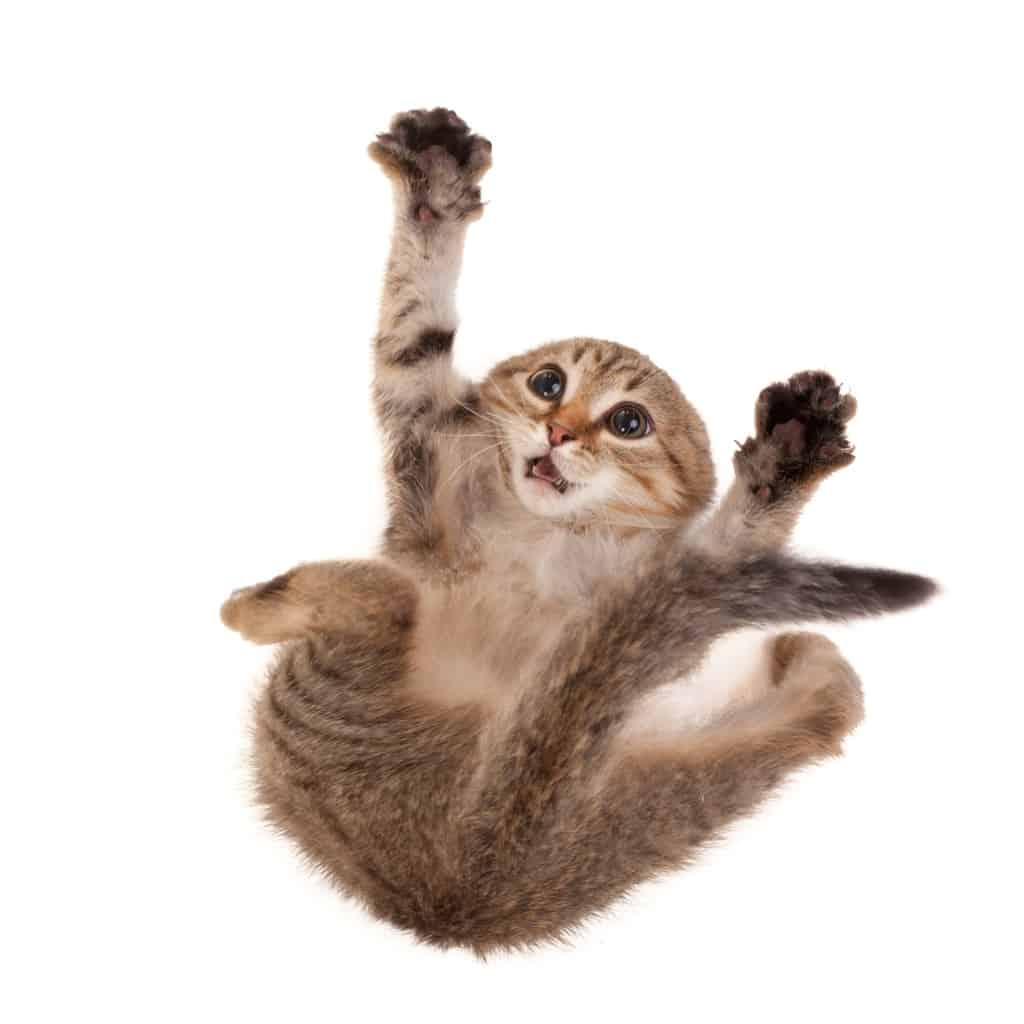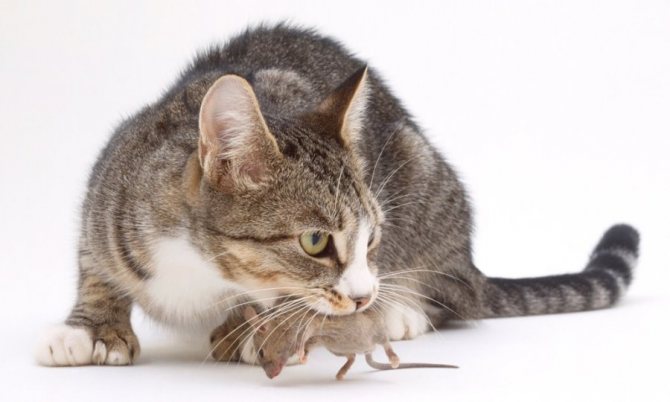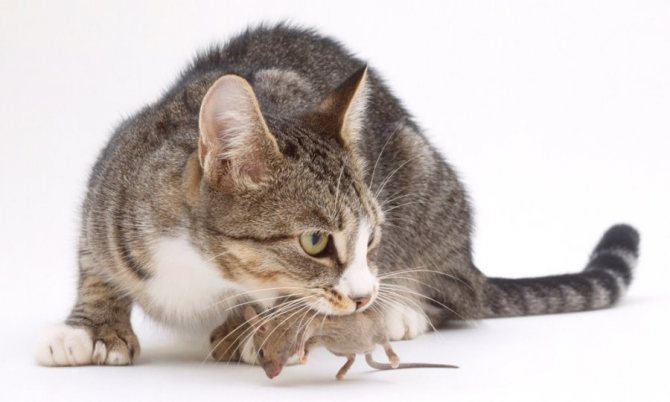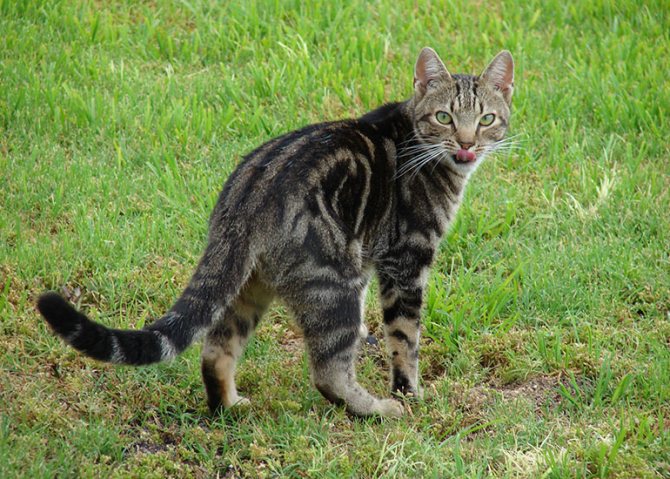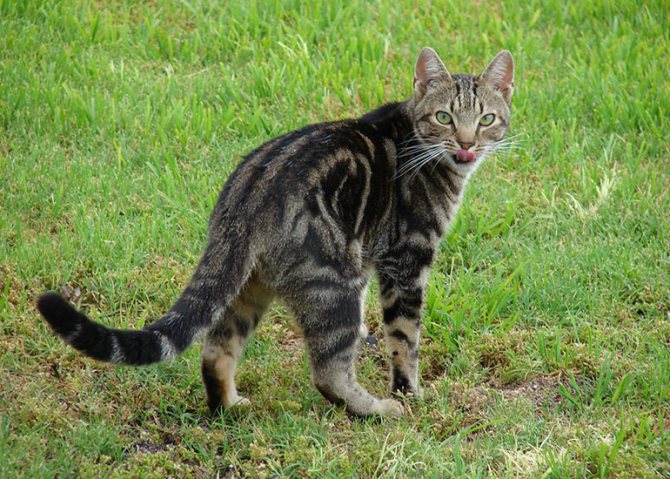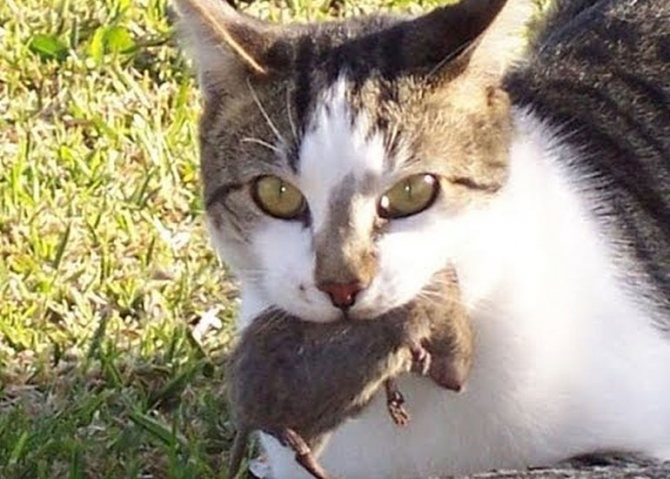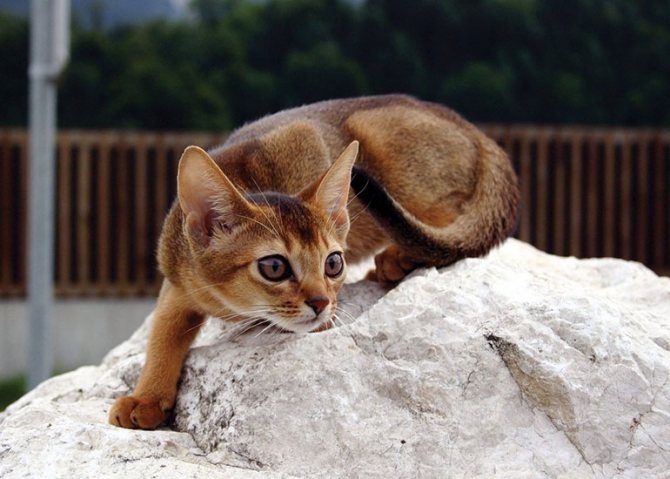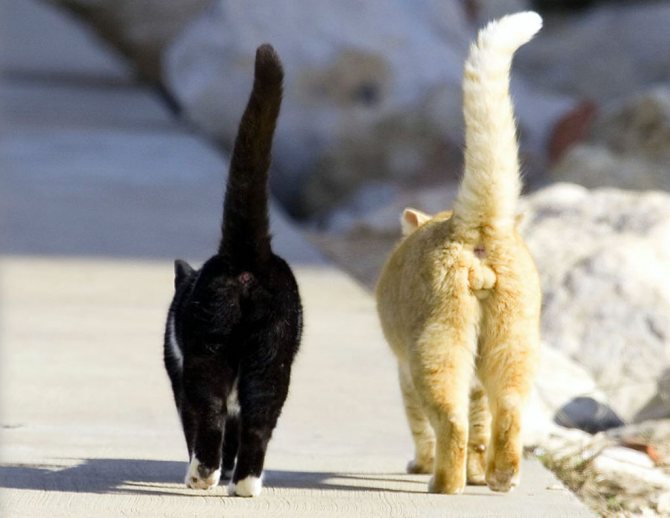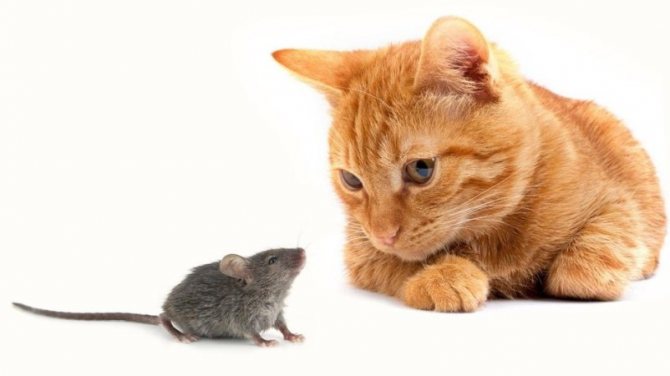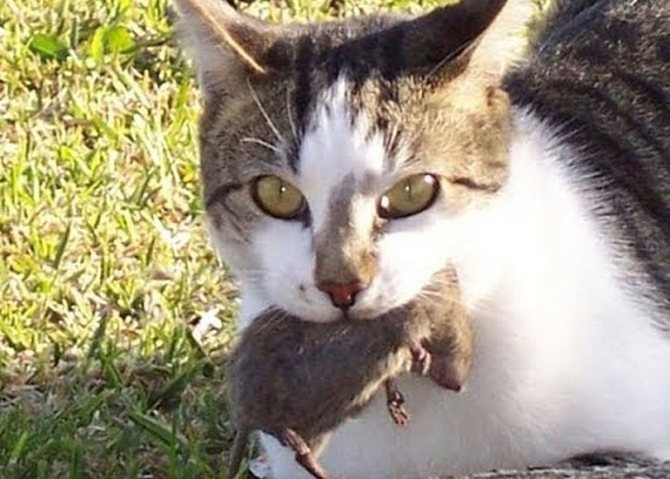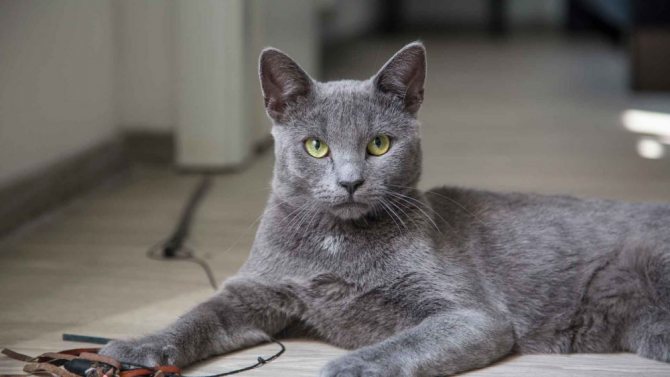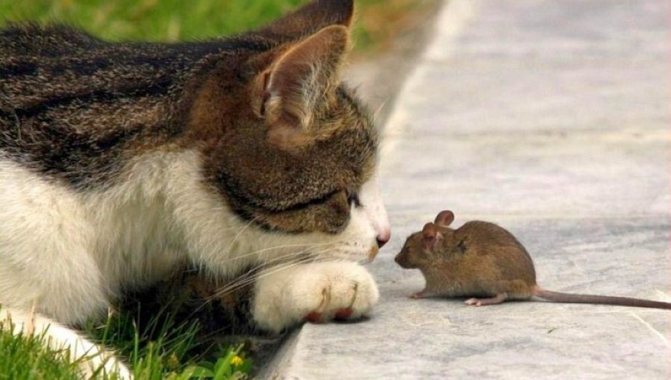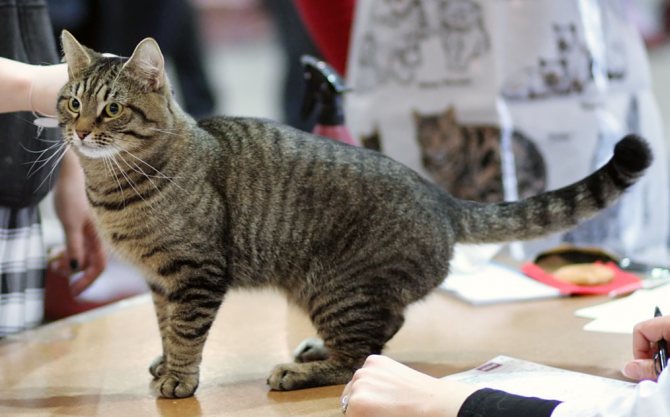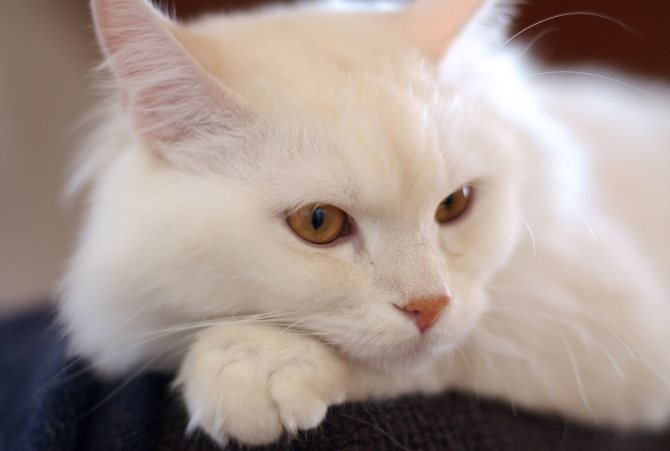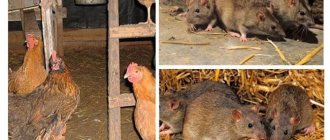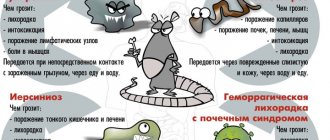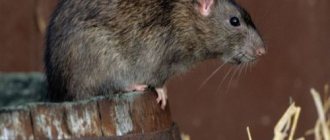People have cats in their families for a variety of reasons. Some just want their four-legged friend to share leisure hours on the couch or bed, while others have young children who want to play with their furry pet. Others choose this animal for a completely different purpose. These owners value cats for their instincts, namely hunting. Cats have lived with humans for a long time and help fight rodents.

On farms, in port cities and even on the decks of ships, cats have established themselves as worthy and dexterous hunters for thousands of years. Chances are you don't ferry spices and silks on ships from Old World to New, so you may not need a cat to deal with pests in your holds. However, no matter where you live, be it the United States or another country, you are bound to encounter at least one of the rodents. To catch them, you need an experienced cat. How not to be mistaken with the choice of breed? Today in the world there are many of their varieties, even too many to be defined. However, there are several breeds that can be distinguished from the entire feline fraternity when it comes to mental acuity, sharp claws and the ability to use them to catch mice. We take a look at 10 of the best breeds to help you get rid of rodents.
Not before will we debunk some myths. Do cats eat mice? At first glance, the answer to this question is quite simple. But, in fact, many people do not know that their pet will often limit itself to strangling the rodent, playing with it, and then bringing it to you. Do they really not eat them? Answer: most of the time no. Cats are capricious and at the same time joyful creatures, completely dedicated to hunting. They will spend all day chasing their prey if they can, but sometimes they are not going to eat it. You must remember that cats were domesticated about 10,000 years ago, which means they have thousands of years behind them, during which the felines developed their hunting instincts.


It is believed that it takes about 10,000 hours of practice for a person to become experts in their field. What can we say about the genetic memory, which is stored in the DNA of the cat! This fact should not be ignored. There are several reasons why cats hunt and kill, but not always eat, their prey, for example:
- In nature, cats must teach their children how to hunt. Your pet may even teach you how to provide yourself with food. Since the animal is not in the wild, the need to eat its prey disappears by itself.
- Sometimes the reasons are simpler. Cats are curious and impulsive at the same time, and therefore they will pursue almost everything. The trouble is that animals cannot always calculate their strength, and sometimes they can kill their prey by mistake.
- If your cat throws mice under the front door, he may have left them there as a kind of offering. There are cases that some cats living in the wild bring trophies to other people's homes in the hope that they will be taken.
The role of living conditions
The hunting instinct is present in cats, regardless of species and sex. To test the skill, you need to scratch your finger on the floor and observe the pet's behavior. The faster the animal reacts to the sound, the stronger the hunting instinct is. If the cat immediately rushes to the hand, it will be good at catching mice.
Pets living in an apartment and not walking in the yard can catch a mouse, but they will not kill and eat the pest. Animals eat mice with the appropriate instinct, which the kitten can only be taught by the mother mousetrap. Animals that grow up in villages or on the street are better at catching rodents, because from childhood they know what a mouse is and how to behave with it. For street cats, hunting is the main way to get food.
How to wean?
An ordinary yard cat, as the centuries-old practice shows, is protected by a high immunity, and dies more often from accidents or from old age than from a mouse infection. Let him hunt, because for this he is kept on the farm. Another situation is when the cat is purebred, even luxury class and participates in exhibitions. Such animals must be strictly protected from contact with rodents. The best way to achieve this is to feed correctly, then the pet simply will not feel the need to hunt. If the instinct cannot be overcome, then you can hang a small bell on the collar. The sound will scare away rodents, and the cat simply will not be able to catch them. There are also exclusive ways to protect your pet from hunting, for example, using electronic devices.
The meaning of the pet's appearance
Success in catching rodents depends on the conditions in which the kitten grew up and the appearance of the animal. The color, which serves as a natural camouflage, plays a significant role. The most preferable colors are discreet fur coats: gray, black, brown. A cat with a variegated or turtle color will merge with the surrounding landscape. The second significant point is the length of the coat. When wet, long wool acquires a specific smell, which serves as a signal for the rodents that a predator is approaching. Therefore, it is easier for short-haired cats to hunt in the rain.
IT'S IMPORTANT TO KNOW! When choosing a rat catcher kitten, you need pay attention to the mustache... Thanks to vibrissae, the pet finds its way in the dark, catches air vibrations, and estimates the distance to the mouse.
What are the signs you can recognize a rat catcher
A cat-mousetrap is not a breed, but a rare skill that develops in a pet due to the conditions of keeping and upbringing. The best hunters are mongrel yard cats, which from childhood had to hunt mice for food. Street animals are not spoiled by the attention and care of the owner, so the hunting instinct develops and lasts for a maximum period.
The following signs will help to recognize a future rat-catcher in a kitten:
- if one of the parents is good at catching mice, by four months the skill will be passed on to the kitten;
- female. Cats catch mice better than cats, which is associated with increased activity and fearlessness. To feed the offspring, the mother cat will get food in any way, so her hunting instinct is heightened;
- head shape. Animals with an oriental-type triangular skull have a greater potential for catching rats;
- activity in the game. If a kitten runs after ribbons, toy mice and catches them with its teeth, it will make a good hunter;
- physiological features. The pet must be well built, have well-developed muscles, strong bones;
- high ears with tassels. Allows the pet to track rustles and squeaks, which increases the likelihood of finding a target;
- color feature. It is believed that the best hunters are tricolor, tortoiseshell, variegated cats.
These features increase the likelihood of a successful hunt. But the development of the skill depends on the conditions of detention and education. If you keep your pet in the apartment, give food at the first call, the hunting instinct "fades away".
Predator on the hunt
Domestic purrs are predators.This means that at the genetic level there is a desire to catch and eat prey. Rat traps are especially prone to this. Kittens next to their mother learn to wash, absorb her habits. Yard kids watch the hunt, after a few months they will be able to catch the mouse on their own.
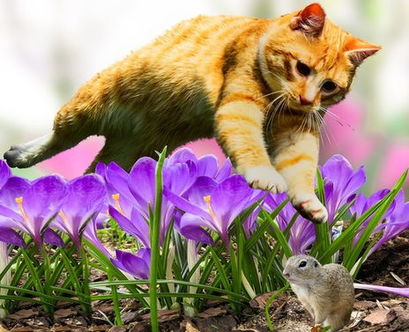

Our service is both dangerous and difficult
Surprisingly, this is a hearty and micronutrient-rich lunch. There is a lot of sulfur in the skin of the prey. Being a part of cystine, cysteine and methionine, it is responsible for the beauty of the coat, well-being and the full development of the cat's body. You can often observe a picture of how a cat is content with only the head of a rodent. The explanation is simple: the brain contains taurine, which is not produced by the body, but is responsible for the proper functioning of organs. It is an antioxidant and supports visual acuity, heart muscle and is responsible for proper functioning:
- nervous system,
- immunity,
- reproductive system.
When choosing a professional food, make sure it contains taurine.
Can sterilized cats catch mice?
It is believed that spaying and castration does not affect the pet's hunting skill. In practice, this is not the case. Such operations often negatively affect the behavior of the animal and its physiological state. If you castrate a cat, the animal becomes lazy and passive, sleeps for a long time, not being interested in what is happening around. Also, after castration, cats gain excess weight, which interferes with a successful hunt. So that the rat catcher does not lose his skills, after the operation, the animal needs to be fed with a suitable dietary food, to stimulate activity.
Nutrition question
An animal that regularly hunts mice needs to be properly fed. The physical condition, strength, endurance of the pet depend on the nutritional characteristics. Domestic cats rarely eat prey, more often they simply strangle the mouse. Only a street or hungry cat can eat a rodent.
The animal can be fed with natural food or industrial food. The main thing is that the pet eats suitable and healthy food, which suppresses the feeling of hunger, saturates the body with vitamins and minerals, and strengthens the animal's immune system.
ON A NOTE! Most domestic cats catch mice for fun, but do not feed on rodents.
Hunting instinct in cats
As for the question of who catches mice better - a cat or a cat, the latter are considered more courageous rat-catchers. A dexterous female is more adapted to hunting, especially since it is she who is entrusted with the task of teaching hunting skills to her babies.
Pets that have grown up in an apartment are not always adapted to catching rodents. The best hunters are street cats and cats. They have well-developed natural instincts and animal habits.
You can determine the rat-catcher by external signs:
- large and dense body build;
- long tail, similar to the letter "G";
- short and powerful legs;
- strong jaws;
- long mustache;
- triangular head;
- large ears (in some breeds with tassels).
To understand whether a cat or a cat can catch rats and mice, you should observe the animal in the game. If, jumping after an object, the pet tries to grab it with its teeth, it means that the cat has the ability to catch rodents.
The rat has a lively mind, it can recognize rat traps and other traps. For this reason, a cat must have a special temperament, possess certain skills and preferences. It should be understood that a rodent can injure a pet.
Another question, the answer to which worries the owner - do cats eat rats. A homeless animal leading a half-starved lifestyle, of course, will eat its prey. Domestic cats catch rats for fun. Young pets can first play with a half-dead rat, and only then kill it. In most cases, the cat kills the victim, and then plays with her corpse.Often, a pet brings a caught rat to its owner, expressing its concern for him.
Suitable breeds
The best mouse catchers are aboriginal cat breeds that appeared naturally, not undergoing a strong transformation. Compared to those artificially bred, in such breeds, hunting skills have been formed over the centuries, which gave the corresponding result.
Maine Coon
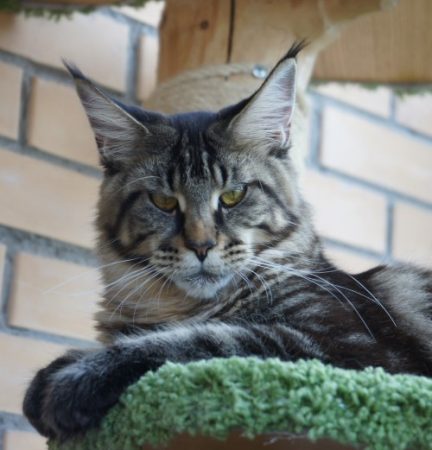

Maine Coon
Maine Coon cats are the best mouse and rat hunters. Maine Coons are distinguished by their large size and strength, which does not prevent them from gracefully jumping and chasing their prey in hard-to-reach places. Maine Coons are gambling animals. A cat can chase a rat for hours, ignoring the heat, cold, rain. Thanks to its thick coat, the animal feels comfortable in the cold and can spend a long time outside. Large body sizes allow you to destroy large rodents, which scare away smaller rat catchers. Maine Coons prefer to spend time in the yard, country life is ideal for them.
Russian blue
Russian blue
Due to its compact size and aristocratic appearance, the owners of village houses doubt the hunting skills of the Russian blue cat. The lack of a lot of weight is compensated by a swift reaction, the ability to quietly move around the yard. The Russian blue cat tracks rodents of any size, which serves as the main entertainment for the pet. The cat's movements are graceful and precise, the speed of movement is amazing. The owners of Russian blue cats confirm that they hear any rustle and leave no chance of survival for the mice.
Siberian


Siberian
The skill of catching mice among Siberians has been confirmed by more than one generation. The pet is large in size, has a thick coat, which allows you to pursue prey in any weather conditions, moving silently. The role of sound insulation is performed by fluffy pads on the paws. Siberian cats move in jerks, make long jumps, which allows them to cope with the prey. Since Siberians are not attached to the owner and home, most of the time pets spend on the street, setting up an ambush for rodents. When the Siberian cat is busy tracking down prey, it ignores the call of the person and the feeling of hunger, plunging into the hunt. It is recommended to get a breed for people living in the northern regions.
Kurilian Bobtail
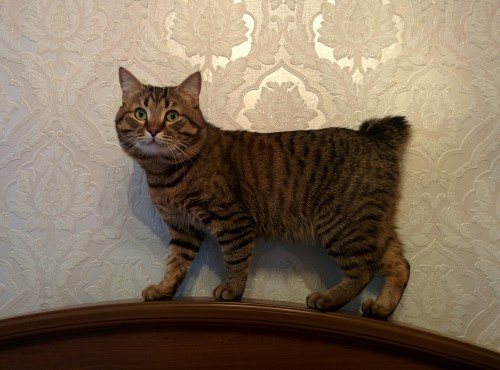

Kurilian Bobtail
They are distinguished by affection for the owner. Kurilian Bobtails have a dog-like disposition, they are ready to protect the owner from all threats and misfortunes. According to the cat, the main danger to humans is the mouse, so the pet devotes all its strength to tracking down and eliminating the rodent. The Kurilian bobtails have powerful hind legs that allow them to develop high speed and make long jumps. The animal easily moves from place to place, capable of destroying broods of mice. Thanks to determination and courage, the Kurilian Bobtail is not afraid to fight even with a medium-sized dog, so the owner may not worry about the safety of the yard. The cat will guard and defend the territory of the house until the end.
Nibelung
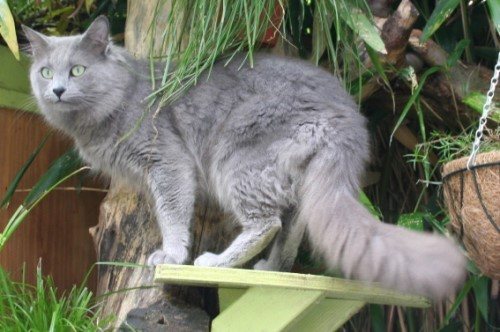

Nibelung
A rare breed of domestic cats with a heavy temperament. Nibulungs are proud and freedom-loving. The animal will not let a person go until he is convinced of his kindness and reliability. English origin and royal appearance does not prevent the Nibelungs from destroying the mice that have settled in the house. Due to the thick long hair, the Nibelungs require care, otherwise the pet will have voluminous tangles.
Kimrick
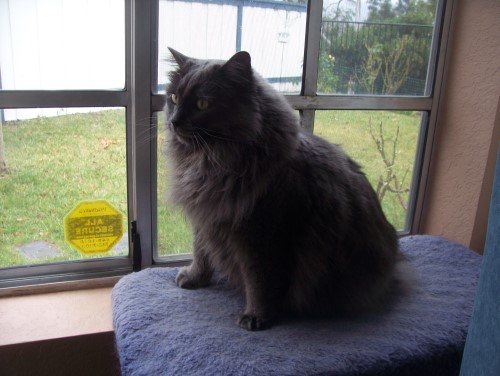

Kimrick
Outwardly they resemble yard cats, have a short tail like a bobtail. It is believed that the elongated tail makes hunting easier, but practice shows the opposite. Thanks to the original structure of the body, the cimrick is perfectly oriented in space and moves gracefully. Strong paws and sharp claws make the animal a successful rat-catcher.Cats are distinguished by their playful disposition and activity, they like to spend time outdoors, hunting for rodents. To maintain shape and health, the animal needs long walks and fresh air. It is recommended to keep them in a private house in an open area.
British Shorthair
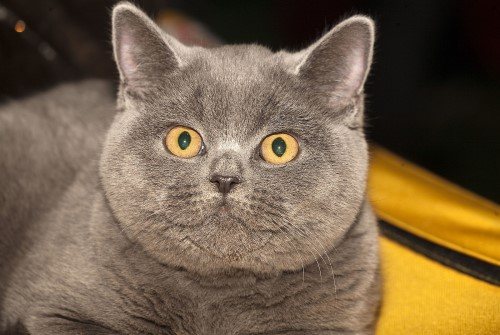

British Shorthair
Because of their cute face and plush fur, the British are considered sissies and slobbery, but these thoroughbred animals make the list of the best rat-catchers. The British have a well-developed hunting instinct, they have the necessary makings. To please the owner, to receive a reward and praise, the animal is able to catch and bring prey in its teeth. Since short-haired Britons are compact in size (rarely weighing more than 5 kg), they are more likely to hunt mice and young rats. They rarely engage in battle with large individuals.
Top 10 breeds for catching rodents
Some of them are more charismatic and characteristic than others, but they all have hunting skills that they have acquired over thousands of years.


- Persian. As for this breed of cats, it is characterized by a certain inconsistency. They've been around since the 1800s, but they have one drawback. Sometimes these cats are affectionately referred to as "fur furniture". However, it would be unfair if we did not include them on our list. Persians have high intelligence, and the females of this breed are great at catching mice.
- Japanese bobtail. Their name is not true. Japanese bobtails originally lived in Korea. They were bred specifically as hunting cats to help fight mice in factories. Like some other cat breeds in different historical periods, the Japanese Bobtail was considered a sacred animal in its homeland. Modern cat owners appreciate them because the animals get along well with adults and children. Sometimes they even bathe in the water.
- Turkish Angora. As you might guess, this cat is originally from Turkey. Unlike some of the other breeds on our list, Angora cats live in the wild, hence they have not been bred. They are graceful and intelligent animals. They get along well with most people, are happy that they feel like masters and, of course, are excellent hunters.
- Manx. The breed is originally from the Isle of Man - a small self-governing territory that is located between Ireland and England. It has always been a popular breed among sailors. Manx is an experienced hunter, both on ships and on land. When the breed first appeared in the United States, it became a favorite among farmers who needed helpers to rid them of rodents that were destroying valuable crops.
- Burmese cat. More than most of the other breeds featured here, Burmese cats are used to thinking about their satiety first. They thrive wherever they can be sure of getting plenty of food. Cats have mouse hunting skills. Burmese cats are also smart and charming, making them an ideal choice for families with children.
- Chartreuse (or Cartesian cat). The breed has been a favorite for centuries. In French literature, in particular, this breed is often mentioned. They are born hunters. They will drop everything just to play a good game. When they are not chasing, cats are calm and docile.
- Siamese. More than one generation of the royal family owned Siamese cats. When members of the royal families left for another world, their cat settled in the temple where their remains remained. The animals lived there in comfort and luxury among the monks. Siamese cats were eventually bred in order to form other breeds - Burmese and Himalayan.
- Siberian. You may already be familiar with the Siberian Husky, a popular dog breed that originally lived in cold climates. And in the world of cats there are "Siberians". These cats are quite large in size and can weigh up to 20 pounds.The breed appeared in Siberia, and cats also lived in northern European countries. The animals are very agile, which is surprising considering their size.
- Maine Coon. Maine Coon is named after the state of the United States. This breed has existed on this continent for more than one hundred years. They are among the largest cats. The animals are easily recognizable for their long, luxurious tails and beautiful fur.
- American Shorthair. Cats have a long and curious history. They lived with humans for about three centuries and were originally brought to the United States from Britain. Urban legend has it that short-haired cats lived in the Mayflower, helping to fight mice in grocery stores. In addition to their hunting skills, the shorthaired are also very affectionate and deserve the highest place in our ranking.
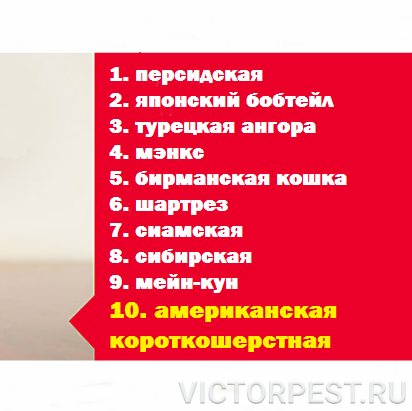

Other breeds
As a hunter in a private house, you can purchase the following breed of cats:
- European shorthair. Intelligent, active and inquisitive pets, distinguished by courage and courage. The European shorthair cat adapts to any weather conditions and is characterized by affectionate behavior. In the fight against rodents, animals have established themselves as ruthless killers.
- European tabby. The color of the animal is similar to that of a tiger. Tabbies are distinguished by their strong structure and muscularity, have a strong large head, sharp teeth and claws. The hunting instinct is built from birth, which is why excellent mouse-catchers grow out of them.
- Turkish Angora. Cats of this breed have snow-white hair and blue eyes. Despite its defenseless appearance, the Turkish Angora strives to live in the yard and lead an active life. Thanks to its fearlessness and curiosity, the pet effectively catches mice.
Should you have a cat or a cat in your apartment?
Buying a pet should be a balanced and carefully considered decision. They become real family members. They are not a toy, therefore, in addition to an interesting pastime, unpleasant moments will also appear. They are loyal to their owners in their own way, unlike dogs, they can ignore the rules of behavior and live as they please.
Everyone knows the advantages of a pet establishment, but few are aware of the negative aspects.
Depending on the upbringing and character, unpleasant factors are expected:
- Torn wallpaper and upholstery - pets sharpen their claws;
- Marked territory and going to the toilet past the litter box - during estrus and sexual activity, cats and cats mark their territory and relieve themselves in corners and in hard-to-reach parts of the home;
- Furniture, toys, clothes outside a closed cabinet covered with wool, the amount of which increases significantly during molting;
- Bad smell in the house - urine has a sharp, unpleasant, very persistent odor;
- Activity at night and sleep during the day - pets prefer to run, make noise, play and meow at night. This factor is due to natural instincts, since cats are nocturnal predators;
- Period of heat or sexual activity - loud growling and meowing sounds, stomping, marking the territory, excessive affection, outbursts of aggression when the animal wants a partner. All these habits are characteristic of cats several times a year;
- Breakage of fragile things, broken decor items and dishes, inverted pots and other parts of the interior. Natural curiosity and mischief are inherent in cats and do not allow them to sit still. Initially, pets do not plan to spoil the owner's property, but in the process they accidentally drop objects on the floor;
- Broken wiring - an unpleasant and deadly factor. Cats love to chew on wires without realizing the dangers of electric current.
The upbringing of a pet must be done regularly and from a young age. In this case, the loss of material values, physical health and nervous tension can be minimized.
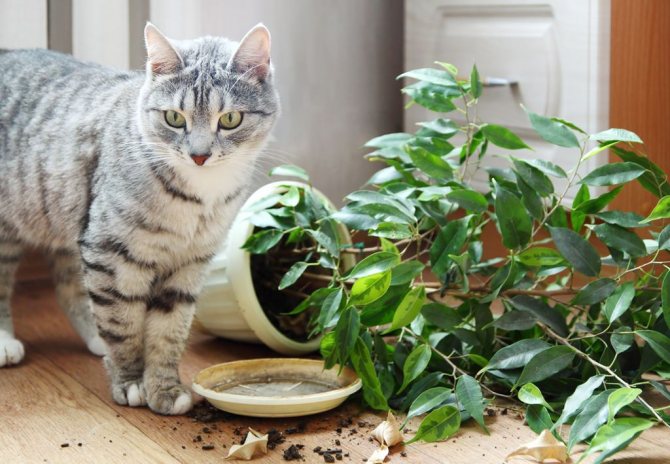

Raising a pet must be done regularly and from a young age.
If, after weighing all the positive and negative aspects of keeping a cat, there are still doubts, then you should not make a new friend yet. Cats are a great happiness and an equally great responsibility.
How to teach a cat to catch mice?
Mouse catchers are found among purebred and outbred cats. In order not to miscalculate, it is recommended to figure out in advance by what criteria to choose a kitten. Attention is paid not to the physical structure, color or breed, but to the parents. If the father or mother is good at catching mice, they will teach the kitten skill. Therefore, you should first ask the owners how good hunters were the parents. A smart option is to go to the nearest village for a kitten. Outdoor animals chase flies, butterflies and other insects, which develops the hunting instinct.
It is difficult to teach a domestic cat to hunt; you need to develop an instinct from childhood. The owner needs to purchase the appropriate toys, trimmed with fur and constantly tease the kitten so that he runs after them. It is necessary to develop the dexterity, speed of reaction, coordination and endurance of the pet. To attract the pet's attention, the toy can be soaked in catnip broth. Alternatively, you can catch the mouse and show the rodent to your pet. The kitten will interest her. You can select a mouse only when the animal plays with the pest and strangles it.
FACT! To train a domestic cat to hunt, many owners limit their diet, which serves as an incentive for catching mice.
Benefit and harm
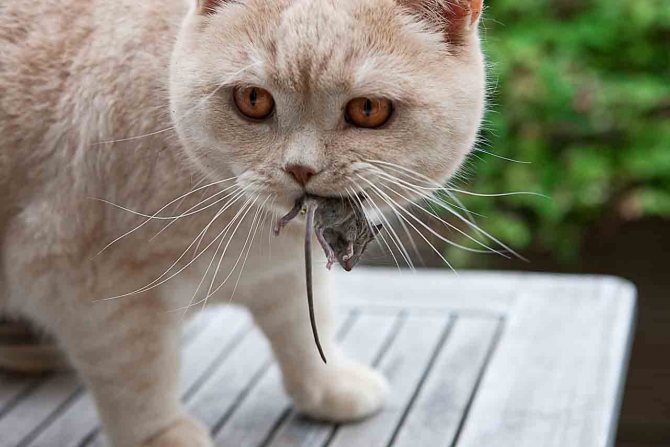

Eating mice harms the pet if the rodents ate the poisonous substance.
Catching mice for an animal is beneficial for the reasons mentioned above: it receives the vital substances taurine and sulfur, in addition, it has fun, satisfying its instincts. The harm of eating mice is as follows:
- The animal can be poisoned if the rodents were taken out with chemicals before.
- In the process of fighting for life, a rat can bite a cat and pass the rabies virus into the pet's blood with saliva.
- With close contact with small animals, a cat can become infected with tularemia, trichinosis, shingles, toxoplasmosis, leptospirosis, salmonellosis. Most of these diseases are transmitted to humans.
The pet must be vaccinated against all diseases.
Recommendations
A hunter cat spends a lot of time outdoors, in contact with other animals, which increases the likelihood of infection and the development of diseases. To protect your pet from diseases, you must remember the following rules:
- the cat needs to be periodically vaccinated against potential diseases;
- the pet needs to be fully fed, given fortified supplements, which will strengthen the immune system;
- every 5 months, clean the pet from worms for the purpose of prevention;
- the animal needs to buy a flea collar to prevent the spread of parasites;
- in early spring, before walking, it is recommended to treat the pet's fur with protective sprays, since the likelihood of an insect attack increases in May.
In order to prevent the cat, you can take it to the veterinarian for examination every six months.


